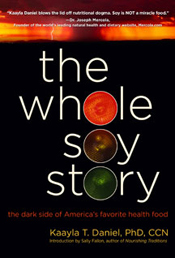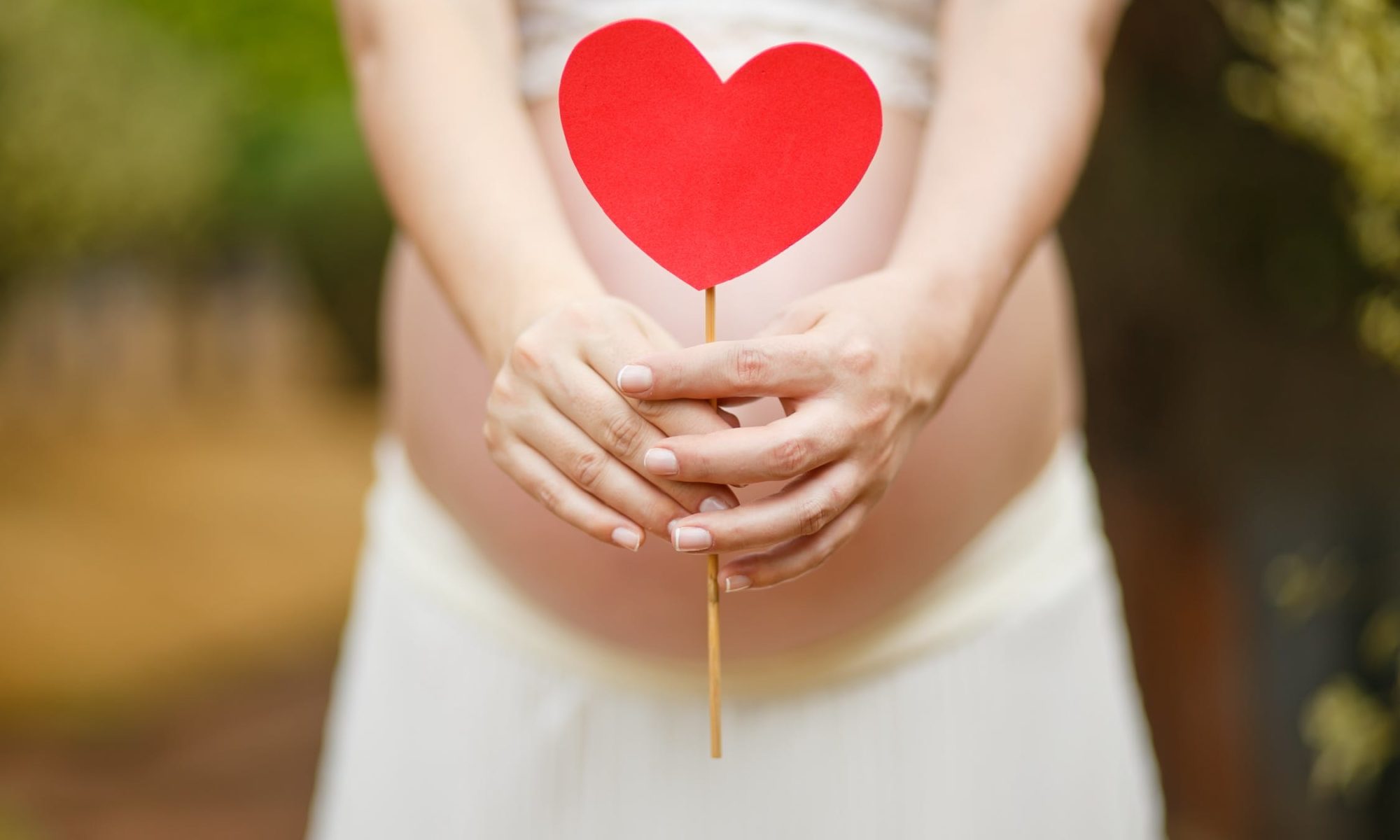Please welcome my friend and fellow blogger Rebekah Greco, of the blog Brothaholic. Rebekah suffered from infertility, miscarriages and pregnancy complications, but then discovered how she could heal her body and now has six healthy children! She has generously contributed this educational guest post about infertility and her experience, as well as ways you can heal and find hope to conceive!
******************************
Infertility can be a topic that is treated a lot like money: it is mostly avoided, but bringing it up can cause explosive reactions or grief.
It is a topic that involves feelings of despair, shame, and hopelessness. While it can be a painful topic, infertility is a condition that is pretty common in the US.

My first pregnancy ended in miscarriage.
While pregnant with my second daughter, I was told that I had the beginnings of both endometriosis and polycystic ovarian syndrome (PCOS). After that birth, my husband and I packed up and moved to another state. I had a new doctor and a new set of eyes to look at more ultrasound results. At this point I was pregnant again. I was told the same thing: Endometriosis and PCOS.
My doctor told me that this would likely be my last birth, that my diseases would continue to escalate, and eventually I would need a hysterectomy. I was told to mentally prepare myself.
I miscarried another pregnancy after that appointment.
Just like the first miscarriage, it was emotionally devastating.
 During these years I began to really research the causes of infertility, miscarriage. My search for answers has continued for another eight years.
During these years I began to really research the causes of infertility, miscarriage. My search for answers has continued for another eight years.
I have discovered there are a lot of possible causes and various forms of infertility. For one person there may only be one or two reasons to experience infertility, for someone else it may be a combination of several reasons, and some never find a reason.
Endometriosis
Endometriosis is when the uterine lining grows outside of the uterus.
It is an inflammatory condition that can cause cramping, pelvic pain and heavy bleeding. (See the sections below about true vitamin A and progesterone as they are related.)
Polycystic Ovarian Syndrome aka PCOS
 PCOS is diagnosed when either one or both ovaries are present with regular abnormal cysts. It can cause delayed or infrequent ovulation and can be associated with later experiencing type II diabetes and heart disease. It is associated with low vitamin D levels. (1)
PCOS is diagnosed when either one or both ovaries are present with regular abnormal cysts. It can cause delayed or infrequent ovulation and can be associated with later experiencing type II diabetes and heart disease. It is associated with low vitamin D levels. (1)
Low Progesterone
Low progesterone can occur during different times for women of childbearing age. Some women have low progesterone, ovulate, are able to conceive, but experience very early miscarriages or what is called chemical pregnancies.
Then there are women that produce enough progesterone to conceive and have pregnancies which go four weeks or more.
 During early pregnancy, an ovary will have a beneficial ovarian cyst called the corpus luteum cyst that supplies progesterone to the baby until their own placenta takes over and begins to produce its own progesterone to sustain the pregnancy. This occurs around the twelve weeks gestation mark.
During early pregnancy, an ovary will have a beneficial ovarian cyst called the corpus luteum cyst that supplies progesterone to the baby until their own placenta takes over and begins to produce its own progesterone to sustain the pregnancy. This occurs around the twelve weeks gestation mark.
For some reason, in some women, the placenta never fully takes over progesterone production, and this causes miscarriage or it may produce progesterone on a more low side of normal.
The ones producing low, or on the low side of normal, may have frequent cramping and spotting. Low progesterone can cause a subchorionic hemorrhage behind where the placenta is implanted. Low progesterone can also cause stillbirth in late-term pregnancies.
Low progesterone is associated with estrogen dominance. (2)
Fallopian Tube Blockages
Fallopian tube blockages can cause the inability to conceive. They can also cause a tubal pregnancy where the baby begins to grow inside the fallopian tube and is most often a medical emergency.
The most common cause of fallopian tube blockages is Pelvic Inflammatory Disease, aka PID, from sexually transmitted infections or surgical infections.
 Blockages can also be associated with endometriosis. Unfortunately, the solution to this is not dietary/lifestyle changes. These changes could certainly help to prevent further damage, but a minor procedure using a laser can be used to clear out the tube or tubes.
Blockages can also be associated with endometriosis. Unfortunately, the solution to this is not dietary/lifestyle changes. These changes could certainly help to prevent further damage, but a minor procedure using a laser can be used to clear out the tube or tubes.
For some types of blockages, a non-surgical procedure can be performed using a special catheter to unclog the blockage.
Low in True Vitamin A
Being low in true vitamin A makes it difficult for the body to rid itself of excess estrogens. Excess estrogen can cause excessive bleeding and is associated with endometriosis. (3) Excess estrogen causes progesterone insufficiency.
 We associate Vitamin A with eating orange vegetables or green leafy vegetables.
We associate Vitamin A with eating orange vegetables or green leafy vegetables.
Unfortunately, converting beta carotene to true vitamin A is dependent on a few factors. Does the individual have the proper gut bacteria present to make the conversion, and are the vegetables consumed well-cooked and with saturated fat? If not, the conversion will not occur (4).
(Note from Leah: You can boost your gut bacteria by taking a high-quality probiotic and real-food supplements. For more information on how to increase beneficial gut bacteria, see my post Bacteria Boom: What Are Probiotics and Why are They So Popular?).
There is a way to bypass these issues by eating foods that have true vitamin A, like pastured eggs (the nutrients are in the yolks!), pastured butter or ghee, and organ meats from pastured animals. For the more squeamish, grass-fed desiccated liver pills can be found online. They come in easy-to-swallow capsules.
Reduced Cervical Mucus
 In order to conceive, cervical mucus is needed to transport the sperm to the egg. In fact, noticing extra cervical mucus is typically a sign that the body is in its fertile phase.
In order to conceive, cervical mucus is needed to transport the sperm to the egg. In fact, noticing extra cervical mucus is typically a sign that the body is in its fertile phase.
When a woman does not produce enough cervical mucus, everything in her fertility may be in working order except for the cervical mucus production. This is when beta carotene from orange vegetables like carrots and sweet potatoes becomes a shining star because it increases cervical mucus production, many times significantly (5).
A Regular Low Body Temperature
(Hypothyroidism is associated with infertility.)
Some cases of hypothyroidism are from the autoimmune disease Hashimoto’s Thyroiditis. Other cases are more easily fixed.
 The thyroid gets stressed from not eating enough calories, excessive dieting, excessive exercise and in turn lowers adrenal function. Hashimoto’s on the other hand typically requires a gut healing protocol and testing for a chronic high viral load from things like Epstein Barr.
The thyroid gets stressed from not eating enough calories, excessive dieting, excessive exercise and in turn lowers adrenal function. Hashimoto’s on the other hand typically requires a gut healing protocol and testing for a chronic high viral load from things like Epstein Barr.
Removal of heavy metals may also be necessary. Other causes of a chronic low body temperature (below 98.6) can be fixed by reducing stress, sleeping more, eating enough calories, and avoiding excessive exercise.
While low-carb diets are beneficial to some women, for other women these diets can stress the thyroid excessively, affect the adrenals, and make conception difficult. (6)
Toxic Exposures
Toxic exposures to poisons can cause both the inability to conceive as well as miscarriages.
 An example of this occurred where I live in the Plano/Frisco area in North Texas. The water supply was poisoned with trihelomethane, which is a known female fertility disruptor. Who knows how long this had been going on and where else this is occurring.
An example of this occurred where I live in the Plano/Frisco area in North Texas. The water supply was poisoned with trihelomethane, which is a known female fertility disruptor. Who knows how long this had been going on and where else this is occurring.
Our family relies on a heavy duty gravity filter, like a Berkey, to reduce our toxic exposures. We do not drink or cook with water directly from the tap.
Early Ultrasound Exposure (before 13 weeks)
Unless a tubal pregnancy is a serious concern (extreme pain in the pelvis and sometimes bleeding caused by the baby growing and the tube rapidly expanding), early ultrasounds are mostly always unnecessary.
 Ultrasounds have been shown to cause changes in tissue temperature and depending on where the baby is attached in the uterus and how long the ultrasound takes, it could be dangerous. We do not fully know the effects at this time. (7)
Ultrasounds have been shown to cause changes in tissue temperature and depending on where the baby is attached in the uterus and how long the ultrasound takes, it could be dangerous. We do not fully know the effects at this time. (7)
I personally had two miscarriages after an early ultrasound. I was on progesterone at the time, so low progesterone was not the cause. During the ultrasounds the babies appeared to be very healthy and active.
Though it’s possible the ultrasounds did not cause my miscarriages, for the rest of my pregnancies I have avoided early ultrasounds. This is merely anecdotal evidence, and is up to your discretion.
How I Healed
After the birth of my second child, I had begun to clean up my diet.
I have never been one to avoid eating regular fruits and vegetables, so that certainly was not my problem. I did begin to eat good fats, such as coconut oil, butter, real olive oil, avocado oil and meat fats.
 I had no idea in years previous that consuming my regular salads with store bought salad dressings was causing chronic inflammation in my body and not allowing my body to properly convert sunlight exposure to vitamin D.
I had no idea in years previous that consuming my regular salads with store bought salad dressings was causing chronic inflammation in my body and not allowing my body to properly convert sunlight exposure to vitamin D.
At that point, I rarely ate things like packaged cookies, crackers, or chips (which are mostly all loaded with cheap, rancid omega 6 oils), but until I became rigorous in avoiding high omega 6 vegetable oil products, I did not see results.
Another thing that helped my body convert sunlight to usable vitamin D was trans-dermal magnesium. I happened to have moved to a place by the ocean and had my feet in magnesium-rich ocean water regularly.
 Those not by the ocean can get extra magnesium by using magnesium oil or magnesium lotion on their skin. Epsom salt baths are another great, inexpensive way to absorb more magnesium, as well as detoxify your body. Another way to get more magnesium is by switching from table salt to Celtic Sea Salt, which has more magnesium. I personally did both.
Those not by the ocean can get extra magnesium by using magnesium oil or magnesium lotion on their skin. Epsom salt baths are another great, inexpensive way to absorb more magnesium, as well as detoxify your body. Another way to get more magnesium is by switching from table salt to Celtic Sea Salt, which has more magnesium. I personally did both.
During this time, I began to do something else that helped my body get rid of mineral deposits in my reproductive organs, which was to consume more vitamin K2. This happened purely by accident, because I had discovered how to make Parmesan cheese crisps and ate them liberally.
Vitamin K2, not to be confused with vitamin K, helps the body to stay in balance. A lack of K2 may cause mineral deposits or plaque in the brain, arteries, kidneys and ovaries instead of in the bones and teeth. Foods with vitamin K2 are pastured egg yolks, grass-fed butter, cultured vegetables like cultured (not vinegared!) sauerkraut, hard cheeses, and natto.

I changed my fats, was out in the sun, had magnesium exposure, and ate Parmesan cheese with wild abandon–and I got pregnant again.
My doctor was not optimistic about this pregnancy, but when I had another ultrasound, there was no sign of endometriosis or PCOS! He was so confused that he went to my old records to re-verify that he was not mistaken. I have had multiple ultrasounds since then and it has never come back.
A Supplemental Band-Aid And More
 I had to use progesterone to maintain my pregnancies starting around 6 weeks and lasting until 34 weeks.
I had to use progesterone to maintain my pregnancies starting around 6 weeks and lasting until 34 weeks.
I cleaned up my lifestyle increasingly with each consecutive pregnancy.
I began to avoid eating or drinking from plastics or cans because they contain chemicals that cause hormone disruption.
We began to filter our water with a Berkey. I did a gut healing regimen to heal from mold exposure that had sickened me in many of the places I had spent a lot of time, like places of employment, a rental home, and a home we owned that we discovered had mold. Mold can produce mycoestrogens, which can also disrupt normal hormone levels. (8)
Another thing I realized should be avoided was conventional beef.
 Beef is one of the last meats on the market that allows excess estrogen unless it is labeled as hormone free. When the cows or steers are put on a feedlot, they are given an ear piercing that delivers estrogen to cause them to gain weight quickly. At home we eat grass-fed beef, but when we go out to eat, I now avoid beef.
Beef is one of the last meats on the market that allows excess estrogen unless it is labeled as hormone free. When the cows or steers are put on a feedlot, they are given an ear piercing that delivers estrogen to cause them to gain weight quickly. At home we eat grass-fed beef, but when we go out to eat, I now avoid beef.
 In my quest to avoid estrogen producers, I also began to avoid soy (with the exception of organic fermented soy sauce or occasional natto) as soy is estrogenic.
In my quest to avoid estrogen producers, I also began to avoid soy (with the exception of organic fermented soy sauce or occasional natto) as soy is estrogenic.
Furthermore, to avoid hormone disruption, I also changed all of my personal hygiene products to ones that avoid toxins and hormone disruptors.
My Real Food Success
My last pregnancy was different than all of my other pregnancies.
For the first time in my life, at six weeks of pregnancy, my progesterone levels were on the low side of the normal range. I was always below normal in week 6 and 7 in previous pregnancies (per the levels recommended by the Pope Paul IV Institute for the Study of Human Reproduction, which differ from the levels presented as within normal range by The American College of Obstetrics and Gynecology).
Since I was on the low side of normal, I took progesterone again to prevent nuisance cramping.
As a note: I used supplemental high dose progesterone.
For one pregnancy, I had done the progesterone injections and had a terrible reaction: huge hives at the injection site. For this reason, I do not recommend the injections because the carrier oils can cause the body to overreact with what appeared to be an autoimmune response.
The pills (Prometrium) are bio-identical, but my doctor felt they were not as effective as progesterone vaginal suppositories. To prevent pregnancy loss I took them for a few days until a compounding pharmacy could finish a prescription for the bio-identical progesterone suppositories. I did this a few times during times of bleeding while I waited for my prescription.
My Experience
What does all of this mean? At this point, if I were to conceive again, would I need supplemental progesterone? I do not know the answer to that, but I am really happy with the results I have gotten so far. I no longer have any signs of endometriosis or PCOS, my progesterone levels during early pregnancy with my last child were close to normal for the first time and I now have six healthy children.
–Written by Rebekah Greco of Brothaholic
Sources:
- The importance of healing your gut
- Vitamin D and PCOS
- Estrogen, progesterone, and endometriosis
- Fat, Vitamins and Hormones
- Thyroid, Adrenal and Hormones
- The affects of ultrasounds on a fetus in the womb
- How do Phytoestrogens affect Human Estrogen?
- The Dangers of Soy and other Phytoestrogens
New to Freedom & Coffee? Start here.
Disclosure: many of the product links in this post are affiliate links, which means I will receive a small commission from any purchase. I only recommend products that I love and this is at no extra cost to you. Thank you for supporting our mission with your clicks!


